In the white season it can get quite cold in our latitudes. How do plants survive in winter and how do they photosynthesize in the cold months?

Animals grow a thick coat in winter, feed on an insulating layer of fat in summer and autumn, fall frozen in winter or go into hibernation. We humans put on warming clothes, drink tea or try to keep ourselves warm in other ways. After all, we are living beings of the same temperature that need a specific temperature to survive. Plants, on the other hand, are cold-blooded organisms. In order to survive the cold winter, they have developed ingenious strategies.
contents
-
Winter strategies of plants
- Wintering plants as seeds
- Wintering of perennials: retreat into storage organs
- Wintering deciduous trees: retreat into the wood
- Overwintering of evergreen plants: leaf and bud frost protection
- Do plants photosynthesize in winter?
-
Plants do that before winter
-
Storage of reserve materials
- Retreat into the wood
- Retreat into the earth: bulbs, bulbs, rhizomes and roots
- Withdrawal in the seeds: propagation and winter protection in one
- Autumn colors of the leaves
- Plants produce their own antifreeze
- Protected buds: starting point for new life
-
Storage of reserve materials
Winter strategies of plants
The winter strategies of plants can be classified into different methods. In general, it is always a question of creating an energy store and protecting the meristem - the formation tissue of the buds, which serves as the starting point for budding in spring. There are 4 strategies:
Wintering plants as seeds
Seed plants whose bodies systematically die off in winter only hibernate thanks to their seeds. This contains both storage substances and the embryonic stem tissue, i.e. the meristem, with the help of which new life is possible.

Wintering of perennials: retreat into storage organs
Perennials are perennial, herbaceous plants that last for several years and thus also the winter. They move energy-rich storage substances into the roots, alternatively in onions, tubers or rhizomes. The meristematic tissue is located very close to the surface of the soil in the form of buds or inconspicuous sleeping eyes.
Wintering deciduous trees: retreat into the wood
The fact that deciduous trees store energy not in the leaves but in the wooden body can be clearly seen from the autumn color. The foliage turns yellow because energy-rich materials are recycled and transported into the wooden part via the leaf stalk. In trees, the buds for re-sprouting are shielded under bud scales, but often several meters above the ground and must be protected by the tree through further frost protection measures.
Overwintering of evergreen plants: leaf and bud frost protection
Evergreen plants do not shed their foliage. As a result, they also shift less reserve substances into the wood body, instead they have to adapt their leaves to the cold weather due to their structure and the storage of various substances. The buds hibernate in a dormant state, which is brought about by a special hormone cocktail.

Do plants photosynthesize in winter?
Not all plants photosynthesize in winter, but the evergreens do - albeit to a lesser extent.
To answer the question in more detail, it makes sense to take a quick look at photosynthesis itself. Photosynthesis describes the process of using light energy and inorganic compounds to produce organic material, i.e. building blocks for the plant body. The main role in this process is played by the green chlorophyll. Plants that shed their green parts or let them die in winter cannot photosynthesize until the green parts are available again.
Evergreen plants, on the other hand, are able to gain energy from sunlight all year round. However, sunlight in our latitudes is weaker in winter and only available for a shorter period of time. Coupled with the cold, which inhibits photosynthesis, this ensures only a very low photosynthesis output. Therefore, even evergreen plants do not continue to grow in winter, but can only meet their daily energy needs to maintain frost hardiness.

Plants do that before winter
Preparations for the cold season start early. Because overnight no plant is prepared for sub-zero temperatures and diet. Due to the cold and shorter days, their hormonal balance is adjusted in such a way that the plants gradually go into hibernation. What sounds like a break, however, is initially associated with a lot more work than you can see from the outside. These processes take time and should not be disturbed: by a cut, too much water or fertilization with the wrong nutrients we can hinder the preparation of the plants and endanger winter hardiness is.
Plants must perform these steps before winter:
Storage of reserve materials
As described above, plants store their energy reserves in different places. Plants have a lot of work to do in autumn to relocate them to the corresponding plant organs.
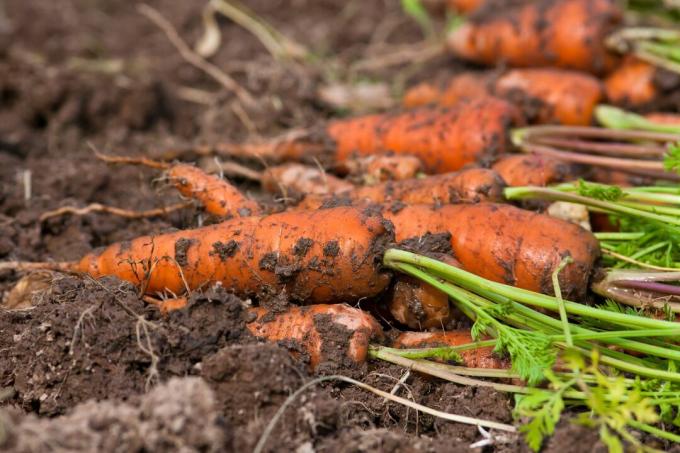
Retreat into the wood
In most of our local deciduous trees, leaf discoloration can be observed in autumn. This phenomenon occurs because the chlorophyll - which makes the leaves appear green - is recycled and transported away. Other energy-rich material is also shifted from the leaves into the trunk.
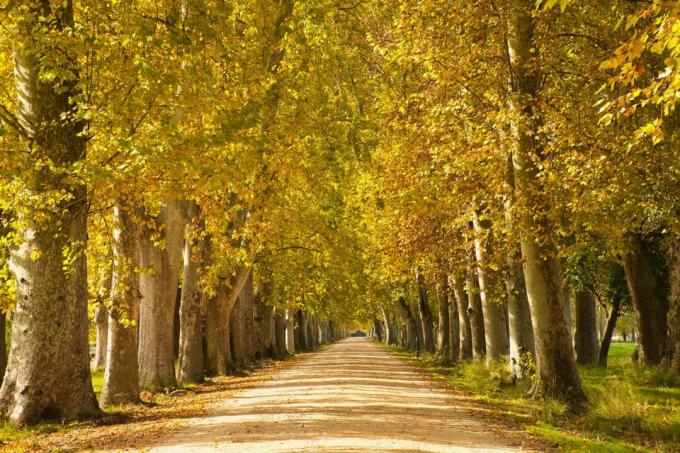
Water-rich cell organelles, the vacuoles, divide below the cortex. A few large vacuoles result in numerous small ones. It is mainly sugar that accumulates in them, but also proteins and other dissolved substances. Essential elements such as potassium, magnesium and phosphorus are also removed from the leaves before they are shed.
Starch is stored in the amyloplasts as an energy reserve. In the course of the year, the trees draw on these reserves, so that most of them are used up again when the leaves unfold in May.
After all the important nutrients and minerals have been stored, the leaves are thrown off. In this way, the area for snow loads and crown movements, which can lead to fractures, is kept as minimal as possible.
Trees may appear inactive on the outside in winter, but they are constantly breathing through cells. In this way they provide energy for the operation of vital metabolic processes.

Retreat into the earth: bulbs, bulbs, rhizomes and roots
Lots of herbaceous plants like that lily of the valley (Convallaria majalis), common groundgrass (Aegopodium podagraria) or ginger (Zingiber officinale) form so-called rhizomes. It is a sprout system growing below or just above the earth with the task of storing reserve substances. Thanks to these stored substances, including starch in particular, many plants can hibernate in the ground. Onion plants use transformed leaves as storage organs. These storage organs are largely protected from frost under the earth's surface.
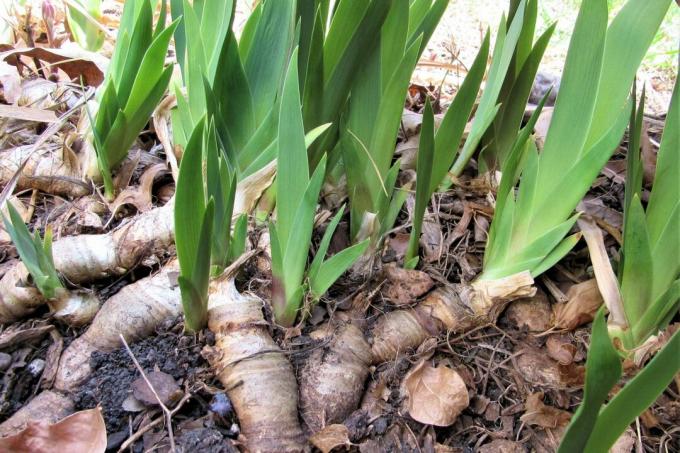
Plants that hibernate underground appreciate our help! Mulch can be applied to reinforce an insulating protective layer. Our Plantura organic pine bark not only protects against drying out, but also suppresses weed growth.
Withdrawal in the seeds: propagation and winter protection in one
Plants can also hibernate as seeds. These usually consist of the seed coat, a nutrient tissue and the embryo, which can be developed to different degrees. Depending on the type of seed, the nutrient tissue is of a different nature. Legume seeds such as beans (Vicia), Peas (Pisum) and lenses (Lens) are rich in protein. The seeds of grain like wheat (Triticum) or oats (Avena) and deciduous trees like oak (Quercus) and sweet chestnut (Castanea) store energy mainly in the form of starch. Some seeds, like the hazelnut (Corylus) and the walnut (Juglans), form seeds with fat as storage bodies. No wonder we humans use many of these seeds as food. In seeds, too, the nutrient tissue is not only used for the step into life, i.e. germination, but also for greatly reduced cell respiration. So every seed is a living, breathing embryo. With a very low water content, the hard seed coat and the high concentration of osmotically effective substances, it is well protected from freezing.

Autumn colors of the leaves
Even irrespective of the fact that the yellow autumn color develops due to the shift of chlorophyll from the leaves into protected parts of the plant, leaves are colored brightly. You can see this from the fact that some evergreen trees, for example the oregon grape (Mahonia), color their foliage brightly in autumn. Anthocyanins and carotenoids, which are formed to protect against frost and too much sunlight, are responsible. Because evergreen plants have a problem in winter: If it is very cold at the same time, but the sun is shining, a lot of high-energy radiation hits the leaf. However, cold slows down all processes in the plant cell so that the solar energy cannot be stored in a usable form. This creates a harmful excess of energy that can damage cell components - similar to what happens when we get sunburned. The anthocyanins, which appear red or purple to us, act as protection against these harmful effects.
A detailed explanation of the Color of leaves in autumn can be found in our special article.

Plants produce their own antifreeze
Why don't plants just freeze in winter, such as vegetables in the freezer? Why is it possible to walk on the lawn when it is frosty without the stalks breaking like ice needles? Freezing the cell would be fatal because the water expands and the cells would simply burst.
The answer can be explained using the example of the sea. If water is enriched with a sufficiently high concentration of osmotically active substances, its freezing point is reduced. In the sea, this osmotically active substance is salt. Various sugars, alcohol compounds and, to a large extent, potassium act as antifreeze agents in plant cells.
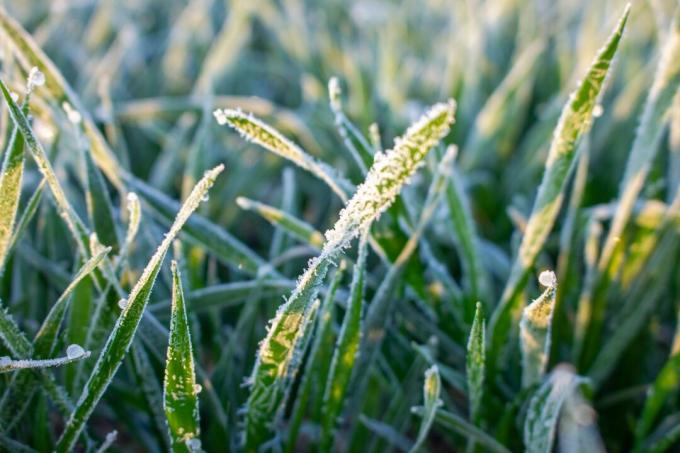
Tip: This is also the reason for autumn fertilization like that Autumn lawn fertilization. Special fertilizers like ours Plantura organic autumn lawn fertilizer promote the winter hardiness of the lawn instead of endangering it. They do this by bringing in potassium, which is stored in the vacuoles as an anti-freeze agent.
In the leaves of the Common ivy (Hedera helix), for example, the freezing point can be lowered to -3 ° C by storing sugar. Other molecules that prevent the formation of ice crystals in the cells also contribute to this.
Due to these special precautions in the storage organs, plants can withstand temperatures below -45 ° C. Of course, this does not apply to every type of plant, but depends on the area from which it comes and what antifreeze precautions have been taken in its genetics.

tip: The 10 best evergreen plants we present you in a separate article.
Protected buds: starting point for new life
Leaf and flower buds are often created in the previous year and then go into a dormant phase to wait for winter. The signal for this is given by low temperatures and a short day length. Hormones are used to initiate processes to protect the leaf and flower buds. To do this, they are surrounded by bud scales. Inside these scales, a white fur forms from dead hair, which has an insulating effect. Of course, "antifreeze" is also stored. In this state, the buds defy cold and frost. Only when the days get longer and warmer again will the frost resistance be reduced, the water content increased and the tissue developed further. At this stage, the buds are at great risk of being damaged by late frosts.
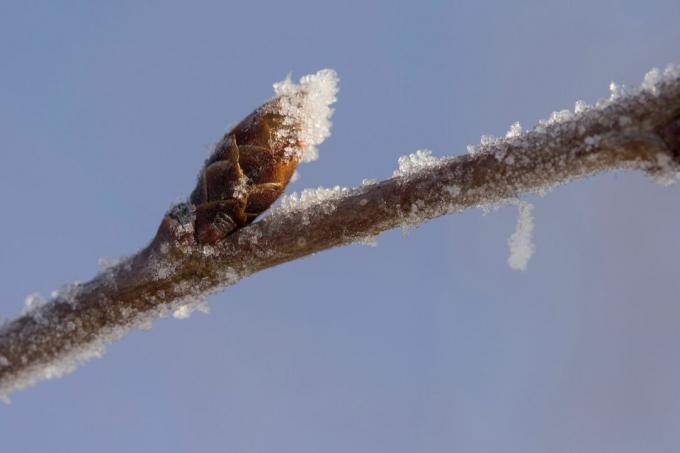
It's warmest on the ground: geophytes like them Spring bloomer hide their buds in the ground. Hemicryptophytes, to which most perennials belong, hide their buds under insulating foliage. Plants that have their renewal tissue at a height of up to 30 cm are called Chamaephytes. Your buds are protected by the blanket of snow. If the buds are even higher, one speaks of phanerophytes, to which all woody plants belong. The higher, i.e. more exposed to the wind, the buds are, the more effectively they have to be protected from frost.
Tip: In the spring, with the help of fertilization and watering, as well as placing them in a warm place, the sprouting of plants can be premature. This is the ideal time to repot potted and houseplants and to give them fertilizer for a successful start to the new growing season! Our Plantura organic indoor & green plant fertilizer Thanks to its NK ratio of 3-4, it is ideal for most indoor plants. But caution is advised: With this treatment we provoke the reduction of winter hardiness, so the sprouting plants should be protected from frost.
As you can see, there are sophisticated tactics such as trees hibernating and other plants outlasting winter. But not all of them are naturally well protected against the icy temperatures. So we're giving you tips on how to use your Hibernate plants properly.



